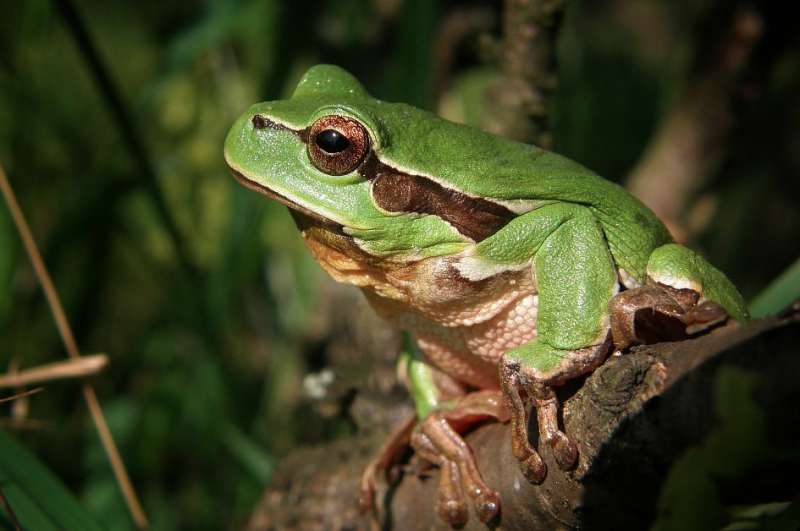Freezing frog cells for conservation

For the first time, Australian frog cells have been successfully frozen and re-grown in culture, offering hope of a new technique to safeguard endangered amphibians.
Around the world and in Australia around 32 per cent of amphibians, including frogs, toads and salamanders, are classed as being under immediate threat from extinction. The main drivers of this crisis are reported as human activity and spread of the chytrid fungus.
University of Melbourne researcher Richard Mollard, from the Faculty of Veterinary and Agricultural Sciences, conducted the work and said freezing tissue, or cryobanking, offers a new technique to safeguard endangered species.
"Amphibian cell culture has only been achieved a handful of times in the world, with most cell culture focussing on mammalian cells. Freezing and subsequent culture of frog cells is even rarer," Dr. Mollard said.
"We now have proof of principle that frog cells can be frozen, thawed and re-grown, while maintaining the structure of their chromosomes.
"This is important because maintaining these genetic structures allows the cells to be used for assisted reproduction techniques if needed. That is, the cells can be used for exploring somatic cell nuclear transfer, or cloning, and gamete production for IVF."
Dr. Mollard said there are currently 950 amphibian species at immediate risk of extinction. "Conservation programs involving habitat conservation, assisted reproduction and breeding programs have all demonstrated success, protecting many threatened species from extinction," he said.
"Unfortunately, there are currently only enough resources for captive breeding programs for 50 species. So cryobanking cells from the remaining 900 species could safeguard them before it is too late."
Dr. Mollard used tissue from non-endangered frog species in a proof-of-principle study to freeze them with liquid nitrogen, thaw and re-culture them for at least two weeks to confirm that chromosomes had not degraded during this process.
"The benefit of this technique is that it doesn't need whole frogs from the wild to do the cultures," Dr. Mollard said.
"Small toe clippings are often already taken to track important amphibians in the wild. So we can use tissue taken for this purpose to cryobank endangered species. We can also take tissue from frogs that will be euthanised due to sickness or injury."
Dr. Mollard said this technique would be used to safeguard the cells of frogs under environmental pressures from increasing urbanisation, and logging and mining zones. "It will hopefully be beneficial for researchers, Zoos and conservationists."
Provided by University of Melbourne


















